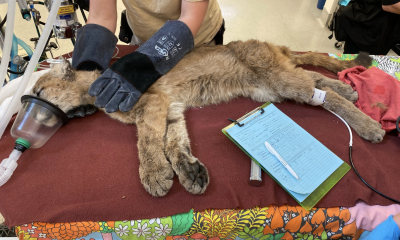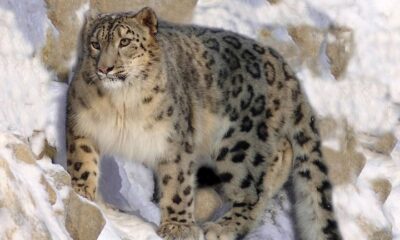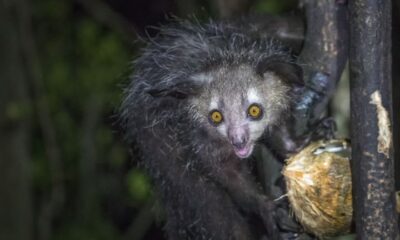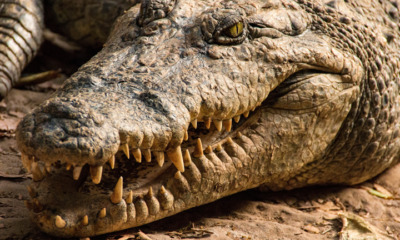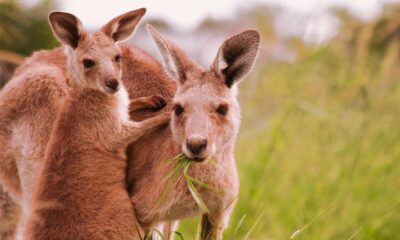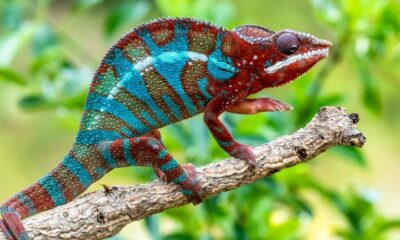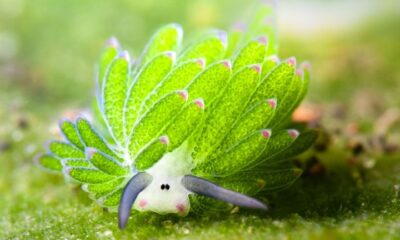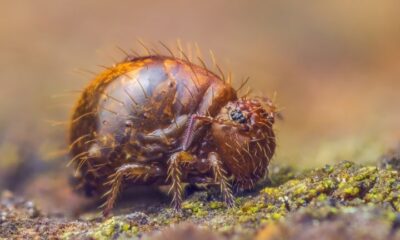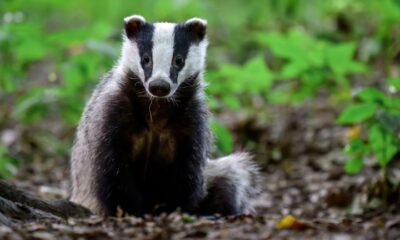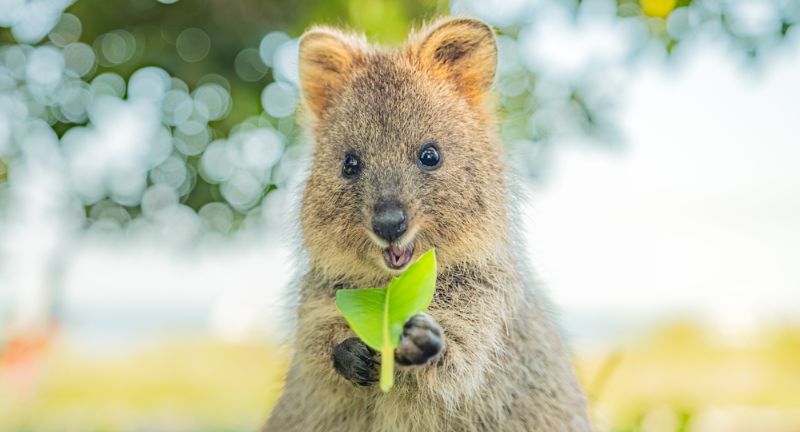
Shutterstock
Woodlands around the world are home to a diverse array of creatures, many of which are irresistibly cute. From tiny rodents to larger mammals, these animals captivate our hearts with their endearing appearances and charming behaviors. Whether it’s the playful antics of squirrels or the serene demeanor of deer, these woodland creatures add a touch of magic to their natural habitats. Some are known for their unique adaptations, while others are loved for their striking beauty and curious nature. Let’s take a journey through the forests and discover 27 of the cutest woodland creatures from around the globe.
Red Squirrel (Eurasia & North America)
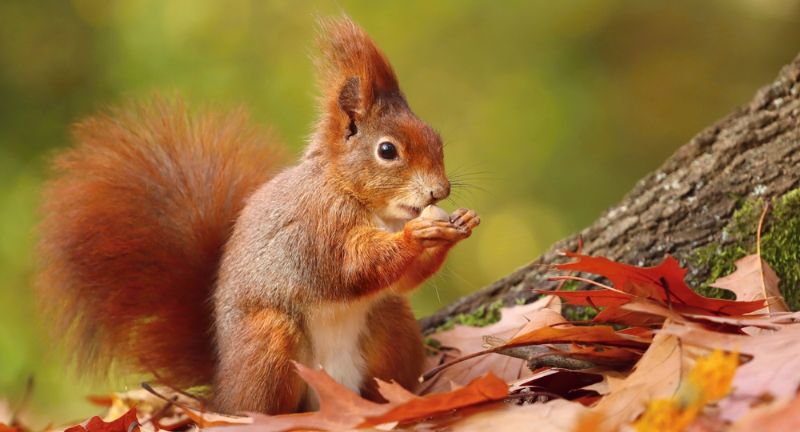
Shutterstock
The red squirrel is known for its bright russet fur, which adds a pop of color to the forest environment. These agile creatures are often seen scurrying up and down tree trunks, showcasing their incredible climbing abilities. With their bushy tails and large expressive eyes, red squirrels have a playful demeanor that endears them to onlookers. They spend much of their time gathering and storing nuts, a behavior that is both entertaining and vital for their survival during colder months.
Hedgehog (Europe, Asia, Africa)

Shutterstock
Hedgehogs are small mammals covered in spiky quills, which they use as a defense mechanism by curling into a ball when threatened. Despite their prickly exterior, hedgehogs have an incredibly cute face with a small snout and beady eyes. They are nocturnal creatures, often heard rustling through leaves in search of insects, their primary food source. Their charming appearance and endearing behavior make them a favorite among garden visitors and wildlife enthusiasts.
Sugar Glider (Australia & Indonesia)
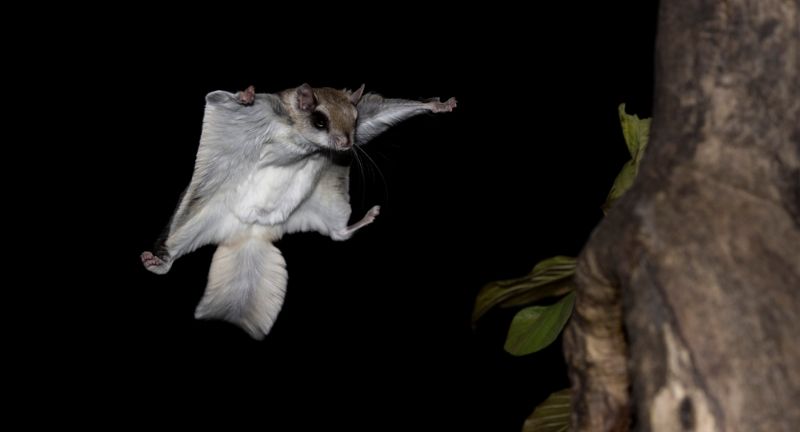
Shutterstock
Sugar gliders are tiny marsupials capable of gliding between trees, thanks to the membrane of skin stretching from their forelegs to their hind legs. Their large, dark eyes and soft, grayish fur give them an incredibly adorable appearance. They are highly social animals and are often seen interacting with their group members in the wild. Their gliding abilities and playful behavior make them fascinating creatures to observe in their natural forest habitats.
Chipmunk (North America & Asia)

Shutterstock
Chipmunks are small, striped rodents known for their endearing habit of stuffing their cheeks with food, often making them look like they are ready for winter at any moment. They are energetic and fast, darting around the forest floor in search of seeds, nuts, and fruits. Their high-pitched chirps and tiny size make them an appealing sight, often bringing a smile to anyone who spots them. Despite their small stature, chipmunks play an important role in the ecosystem, aiding in seed dispersal and forest regeneration.
Quokka (Australia)

Shutterstock
Quokkas are small marsupials that have gained worldwide fame as “the happiest animal on earth” due to their seemingly constant smile. They have round bodies, short limbs, and a friendly demeanor, making them irresistibly cute. Native to a few islands off the coast of Western Australia, quokkas are naturally curious and unafraid of humans, often approaching visitors with a cheerful expression. Their playful nature and iconic grin have made them a symbol of joy and positivity in the animal kingdom.
Roe Deer (Europe & Asia)
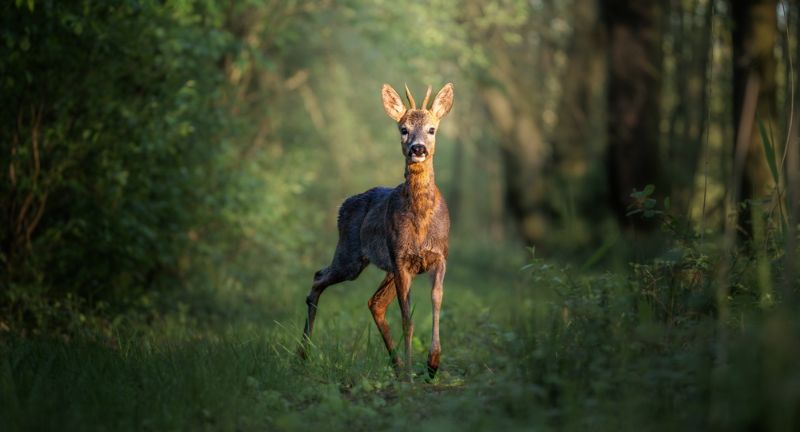
Shutterstock
The roe deer is a small, graceful creature with slender legs, large ears, and big, dark eyes that give it a gentle and somewhat delicate appearance. They are often seen moving gracefully through the underbrush, nibbling on leaves and twigs. During the spring and summer, their reddish-brown coats help them blend into their woodland surroundings. Roe deer fawns are particularly adorable, with their speckled coats and wide-eyed innocence, reminiscent of beloved storybook characters.
Dormouse (Europe & Asia)
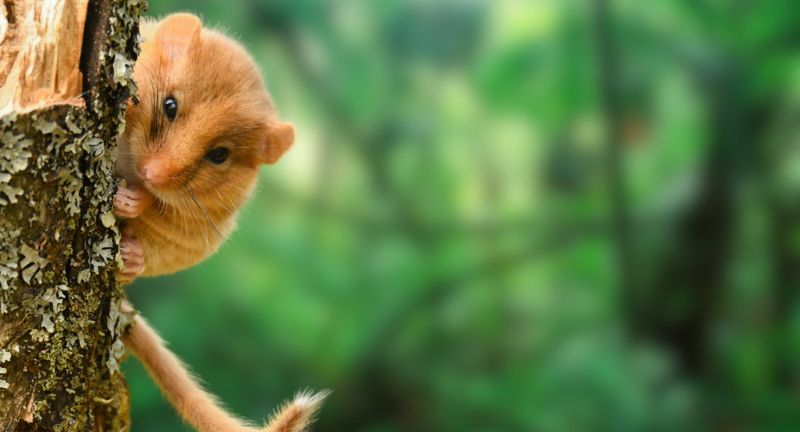
Shutterstock
Dormice are small rodents that possess large, round eyes and fluffy tails, making them look perpetually surprised and incredibly cute. They are known for their long hibernation periods, often spending several months curled up in a ball to conserve energy during the colder months. When they are active, they move with a gentle agility, often navigating through tree branches in search of berries and nuts. Their endearing appearance and sleepy nature have made them a popular character in folklore and children’s literature.
Koala (Australia)

Shutterstock
Koalas are tree-dwelling marsupials known for their round faces, fluffy ears, and calm demeanor. They spend most of their time perched in eucalyptus trees, leisurely munching on leaves, which constitute their main diet. Koalas sleep for up to 18 hours a day due to their low-energy diet, often found curled up in the fork of a tree looking as snug as a living teddy bear. Their slow, deliberate movements and serene expressions add to their endearing, cuddly appeal.
Pine Marten (Europe & North America)
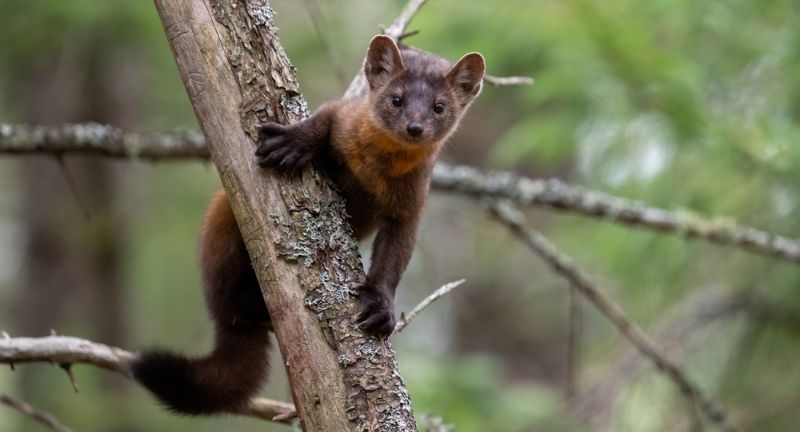
Shutterstock
Pine martens are sleek, agile mammals with a luxurious coat of fur and a curious, fox-like face. They have a graceful agility that allows them to effortlessly climb trees and navigate the forest canopy. Their fur ranges in color from golden-brown to dark brown, often with a distinctive cream-colored patch on their chest. With their inquisitive nature and expressive faces, pine martens add a touch of mystery and elegance to the woodland creatures they share their habitat with.
Slow Loris (Southeast Asia)
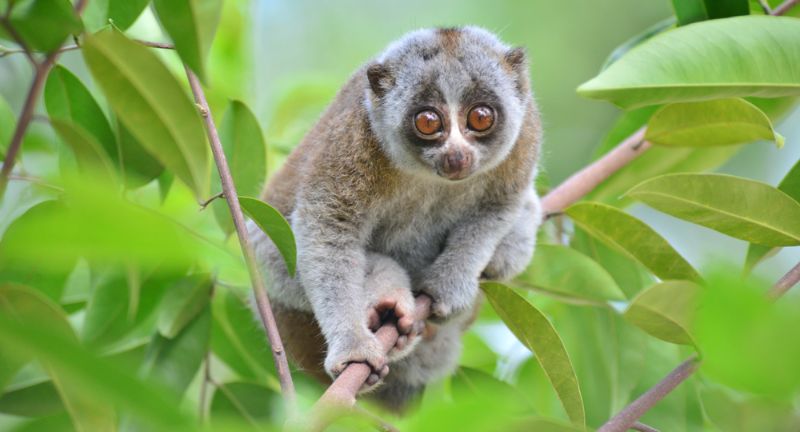
Shutterstock
The slow loris is a small primate with strikingly large eyes, adapted for its nocturnal lifestyle in the dense jungles of Southeast Asia. Its slow, deliberate movements give it a somewhat mystical quality as it navigates through the trees. Despite its slow pace, the slow loris is a skilled hunter, using its strong grip to catch insects and small prey. Its fluffy fur and innocent expression make it one of the most charming and unusual creatures in the Asian forests.
Japanese Dwarf Flying Squirrel (Japan)
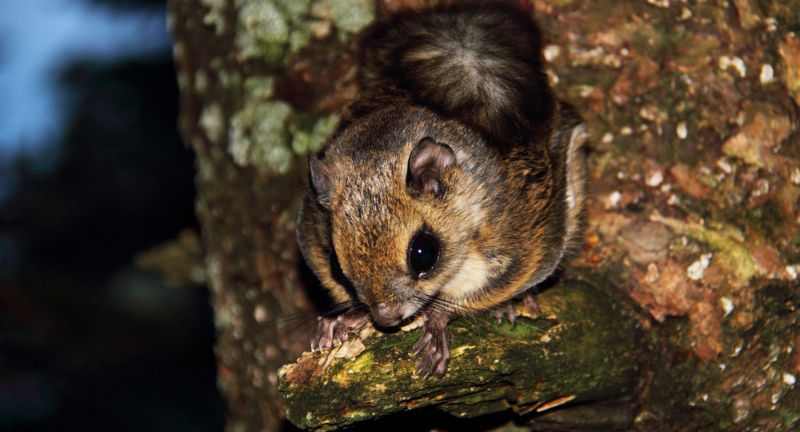
Shutterstock
The Japanese dwarf flying squirrel is a petite, adorable rodent with large, dark eyes and a flattened tail that aids in its gliding capabilities. It has a flap of skin extending between its front and hind legs, allowing it to glide effortlessly from tree to tree. This tiny squirrel is most active at night, and its gentle, almost toy-like appearance makes it a delight to observe in its natural forest habitat. Its fluffy fur and cute, round face make it look like a miniature plush toy come to life.
Raccoon Dog (East Asia)
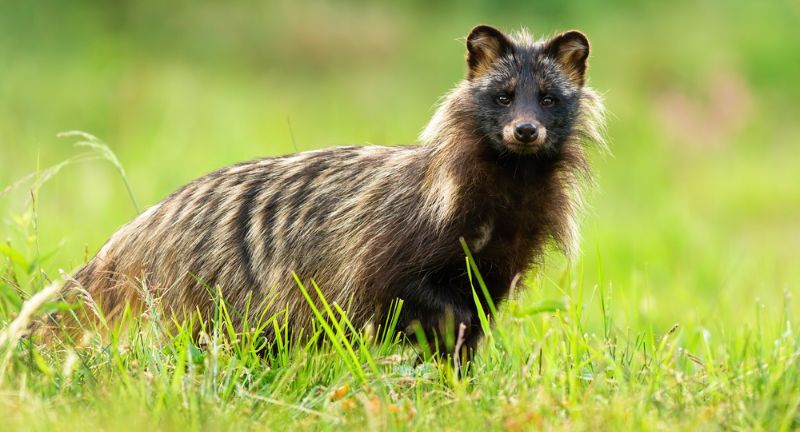
Shutterstock
The raccoon dog, or tanuki, is a unique canid with a round face, dark eye patches, and a fluffy coat that resembles a raccoon’s. It has a bushy tail and small ears, adding to its teddy bear-like appearance. Despite its resemblance to the raccoon, the raccoon dog is not closely related to it but shares some similar traits and behaviors. Its adorable, somewhat comical look has made it a beloved figure in Japanese folklore, often associated with good fortune and trickster traits.
Wood Mouse (Europe & Asia)
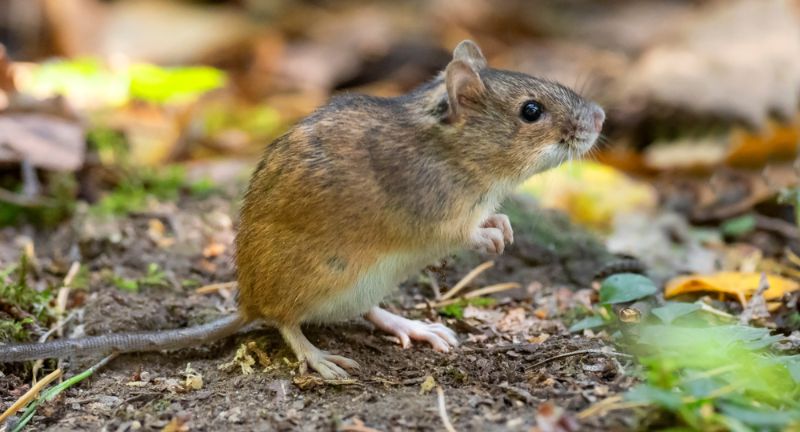
Shutterstock
Wood mice are small, agile rodents with large ears and eyes, giving them a perpetually alert and endearing expression. They are highly adaptable creatures, often found in a variety of woodland habitats, where they forage for seeds, fruits, and insects. Their soft fur and twitching noses make them appear straight out of a children’s storybook. Despite their tiny size, they are known for their ability to jump great distances, making them fascinating and delightful to watch.
Pygmy Owl (Europe, Asia & North America)
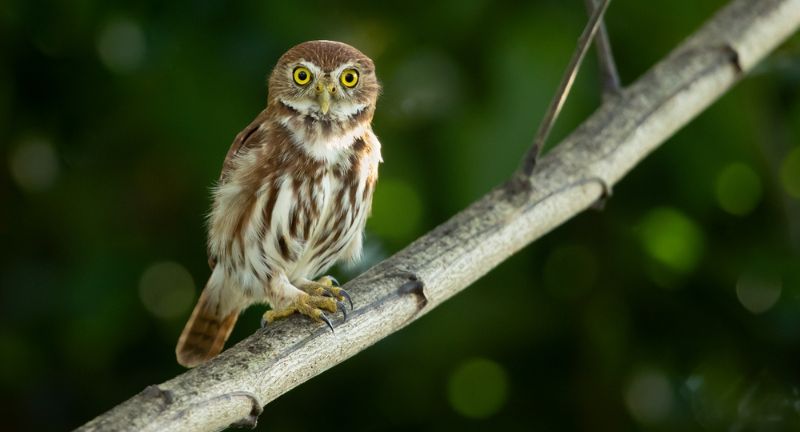
Shutterstock
Pygmy owls are among the smallest owls in the world, with a compact body and large, expressive eyes that give them an intense yet adorable appearance. They are skilled hunters, despite their small size, often preying on insects and small mammals. Their fluffy feathers and endearing habit of perching with a slightly ruffled look make them look like tiny, fierce guardians of the forest. Pygmy owls are known for their characteristic tooting calls, adding to the mystical ambiance of their woodland homes.
Bush Baby (Africa)
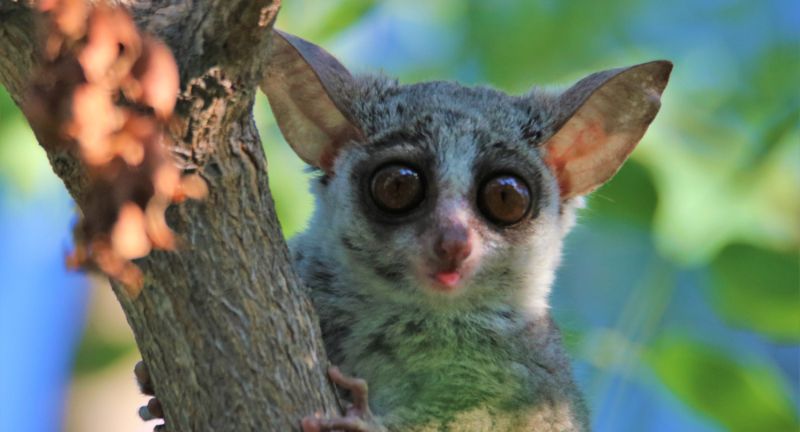
Shutterstock
Bush babies, also known as galagos, are small primates with large, round eyes adapted for their nocturnal lifestyle. Their eyes give them a wide-eyed, innocent look, adding to their cuteness. They have strong hind legs that allow them to leap between tree branches with incredible agility. Often heard before they are seen, bush babies’ high-pitched calls are a familiar sound in the African woodlands, and their playful nature makes them fascinating creatures to observe.
Pika (Asia & North America)
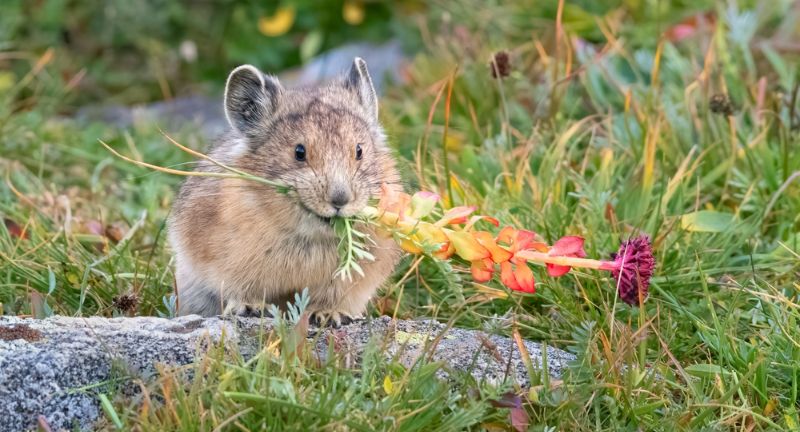
Shutterstock
Pikas are small, herbivorous mammals that look like a charming cross between a rabbit and a mouse. With their round bodies, short limbs, and rounded ears, they have a compact and undeniably cute appearance. Pikas are known for their high-pitched alarm calls and their habit of gathering and storing vegetation in “haypiles” for winter. Their busy, industrious nature and petite size make them a delightful sight in the alpine meadows and rocky slopes they call home.
Muntjac Deer (Asia)
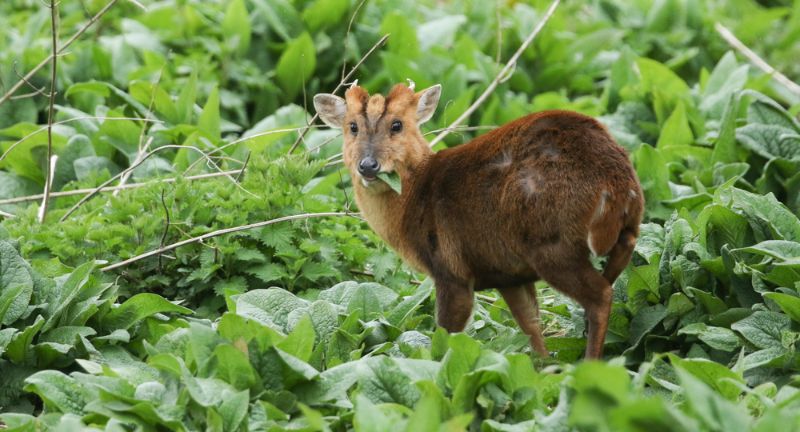
Shutterstock
Muntjac deer, also known as barking deer, are small, stocky deer with short legs and big, soulful eyes. They have a unique appearance, with their reddish-brown coats and the males sporting small antlers and tusks. Their fawns are particularly cute, with their tiny size, large eyes, and soft, spotted coats. Muntjacs are known for their distinctive bark-like call, which they use to communicate with each other, adding a touch of intrigue to their endearing presence in the forest.
Pudu (South America)
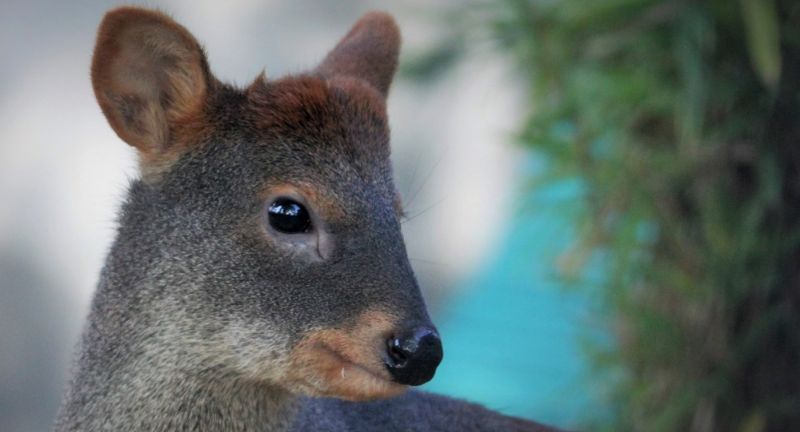
Shutterstock
The pudu is the world’s smallest deer species, with adults standing just about a foot tall at the shoulder. Its small stature, round body, and large eyes give it a delicate, almost toy-like appearance. Pudus have short legs and a reddish-brown coat, which help them blend into the dense underbrush of their forest habitats. Their fawns are especially adorable, with their tiny size and spotted coats making them look like miniature versions of their already petite parents.
Tree Kangaroo (Australia & New Guinea)
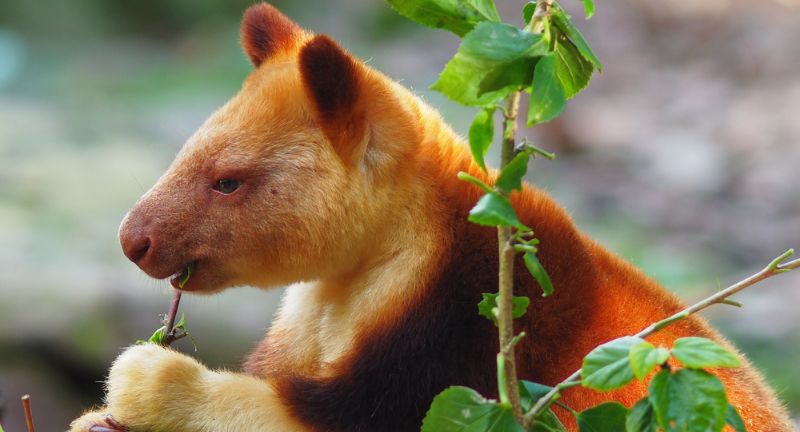
Shutterstock
Tree kangaroos are marsupials adapted to life in the treetops, with their strong forelimbs and long tails aiding in balance and movement among branches. They have thick fur, round faces, and bushy tails, giving them an adorable appearance akin to a mix between a bear and a kangaroo. Tree kangaroos are solitary and shy, spending most of their time high in the canopy where they feed on leaves, fruits, and flowers. Their gentle, elusive nature and plush appearance make them one of the cutest inhabitants of the rainforests they call home.
Flying Lemur (Southeast Asia)
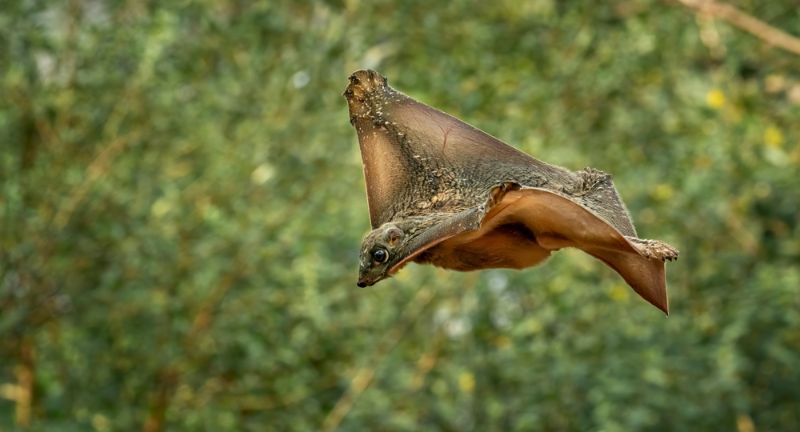
Shutterstock
The flying lemur, or colugo, is not a true lemur but a gliding mammal with an impressive ability to glide long distances between trees. It has large, round eyes and a soft, furry body that gives it a surprisingly cute appearance despite its somewhat alien look. Its wide-eyed face and ability to cling to tree trunks with a unique membrane that stretches from its neck to the tips of its toes add to its endearing qualities. The flying lemur’s quiet, nocturnal lifestyle and graceful gliding make it a captivating and mysterious forest dweller.
Beaver (North America & Europe)

Shutterstock
Beavers are large, semi-aquatic rodents known for their dam-building skills and strong work ethic. They have wide, flat tails, large front teeth, and webbed feet, which they use to transform their environments by building dams and lodges. Despite their industrious nature, beavers have a calm and gentle demeanor, often seen swimming gracefully through water with only their heads visible. Their chubby bodies, glossy fur, and endearing behavior make them a beloved sight in the woodlands and waterways they inhabit.
Chinchilla (South America)
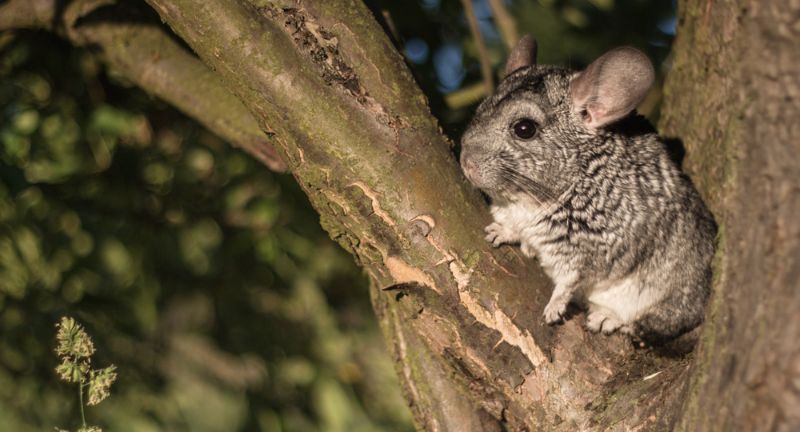
Shutterstock
Chinchillas are small rodents with the softest fur of any land mammal, which was once highly prized and nearly led to their extinction in the wild. They have large ears, bushy tails, and gentle, inquisitive expressions that make them look like the epitome of cuteness. Chinchillas are active and playful, often seen hopping around and grooming their thick fur to keep it clean. Their endearing appearance and delicate nature have made them popular pets and ambassadors for wildlife conservation efforts.
Kinkajou (Central & South America)
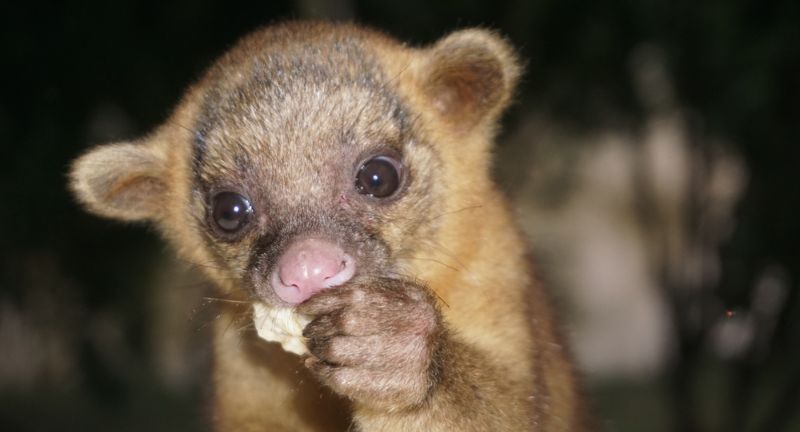
Shutterstock
Kinkajous are small, nocturnal mammals with large eyes, soft fur, and a prehensile tail that helps them navigate the forest canopy. They have round faces and a playful nature, making them look like a cross between a teddy bear and a monkey. Kinkajous are known for their sweet tooth, often feeding on fruit and nectar, which they scoop up with their long tongues. Their curious and agile behavior makes them one of the most charming and fascinating creatures of the Central and South American forests.
Red Panda (Himalayas)
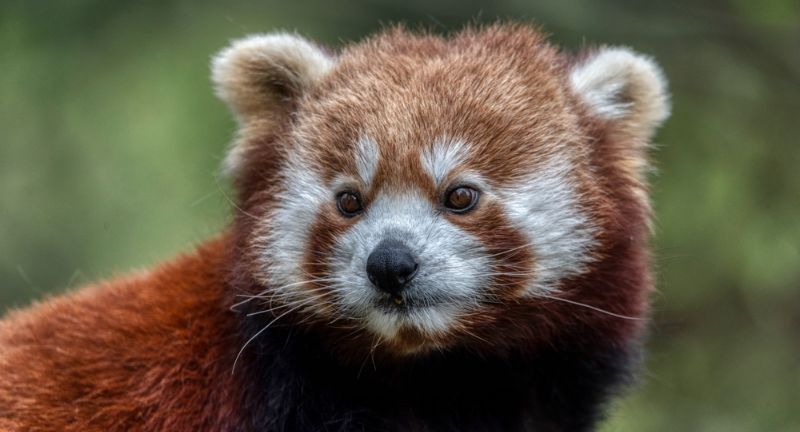
Shutterstock
Red pandas have soft, reddish-brown fur, bushy tails, and masked faces that give them a charming and playful appearance. They move gracefully through the trees of the Himalayan forests, using their semi-retractable claws for climbing and balance. Red pandas are known for their gentle nature and love of bamboo, often seen nibbling on leaves with their tiny paws. Their solitary and serene lifestyle, combined with their plush appearance, makes them one of the most endearing creatures in the animal kingdom.
Snowshoe Hare (North America)
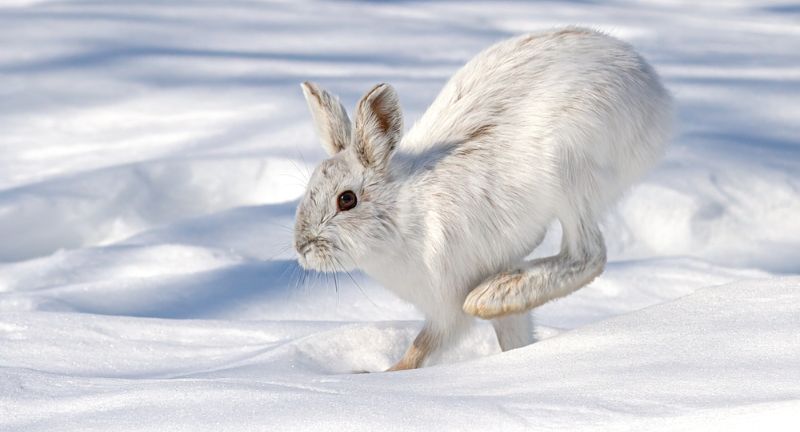
Shutterstock
Snowshoe hares are known for their large hind feet, which help them move easily over snow, and their seasonal coat changes from brown in summer to white in winter. This camouflage adaptation makes them a fascinating and adorable part of the forest ecosystem. They have large eyes, long ears, and a gentle, timid demeanor that endears them to those who encounter them in the wild. In winter, they blend seamlessly into snowy landscapes, looking like fluffy white shadows darting across the forest floor.
Arctic Fox (Arctic regions)
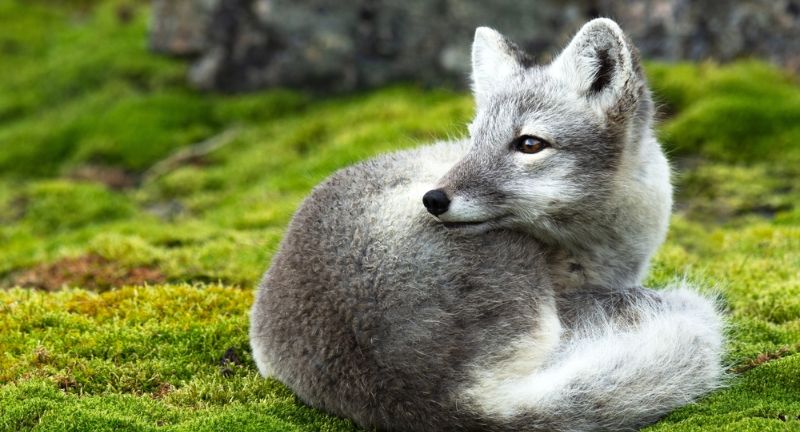
Shutterstock
The Arctic fox has a fluffy white coat in the winter that provides excellent insulation and camouflage in its icy habitat. In summer, its fur changes to a brown or gray color, blending into the rocky tundra landscape. It has small, rounded ears and a bushy tail, giving it a compact and endearing appearance that looks like a snowball with a face. Despite the harsh conditions of its environment, the Arctic fox is a hardy and resourceful animal, adding to its charm and allure.
Gray Wolf Pup (Northern Hemisphere)
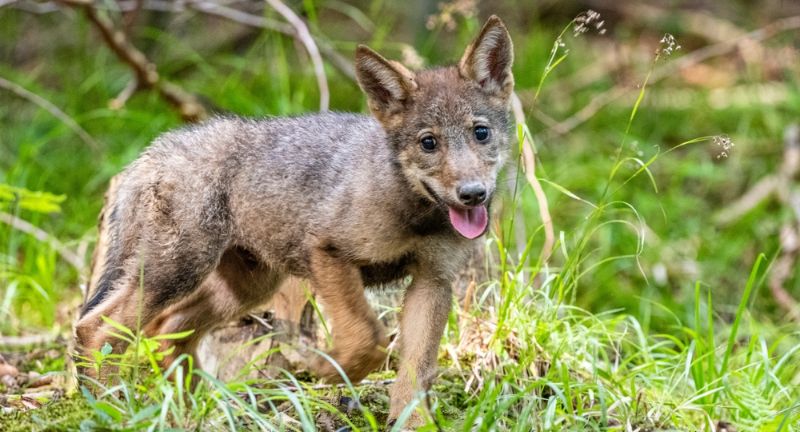
Shutterstock
Gray wolf pups are born with dark fur and blue eyes, which gradually change as they mature. They are curious, playful, and full of energy, often seen tumbling over each other and exploring their surroundings. Their large paws, floppy ears, and innocent expressions make them irresistibly cute, though they will grow into powerful predators. Watching wolf pups interact with their pack members is a heartwarming glimpse into the social dynamics and familial bonds of these incredible animals.
Conclusion
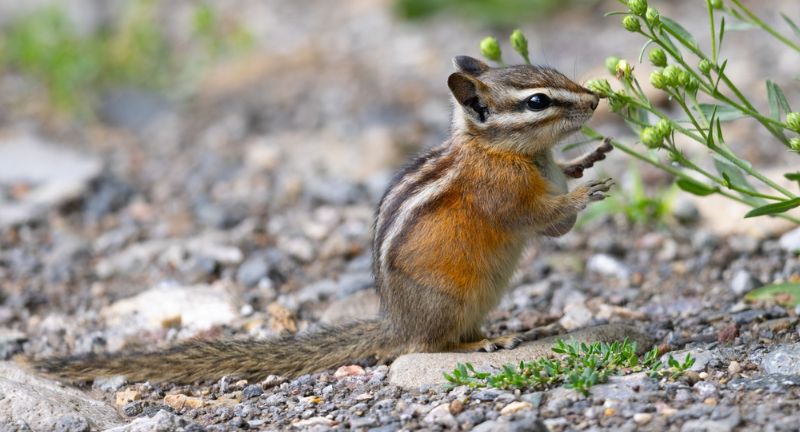
Shutterstock
Woodland creatures bring a sense of wonder and joy to their natural habitats, reminding us of the beauty and diversity of the animal kingdom. Each species, with its unique traits and behaviors, contributes to the intricate tapestry of life in forests around the world. By appreciating these adorable animals, we also recognize the importance of preserving their habitats and protecting the natural environments they call home. Their cuteness may draw us in, but it’s their role in the ecosystem that truly makes them remarkable. Let’s continue to marvel at these creatures and strive to ensure that they thrive for generations to come.





























